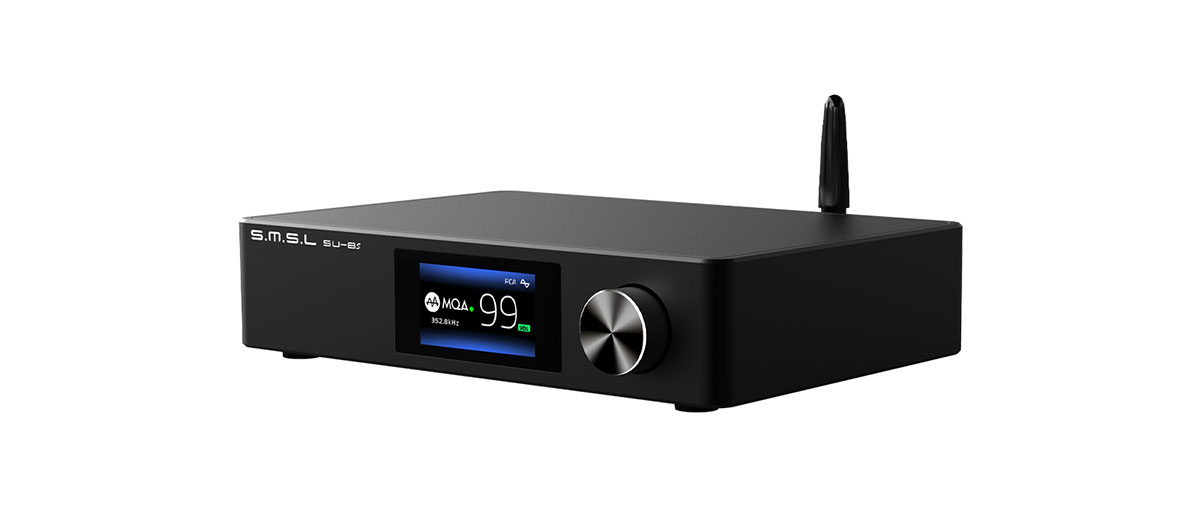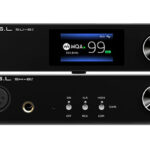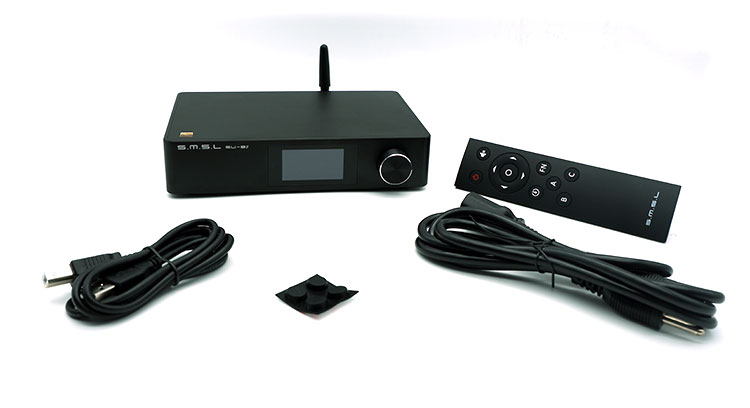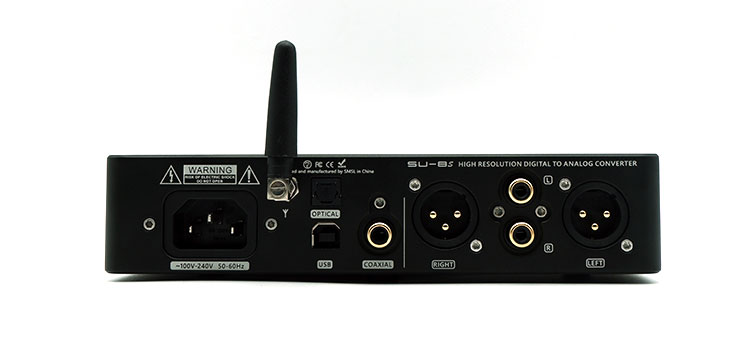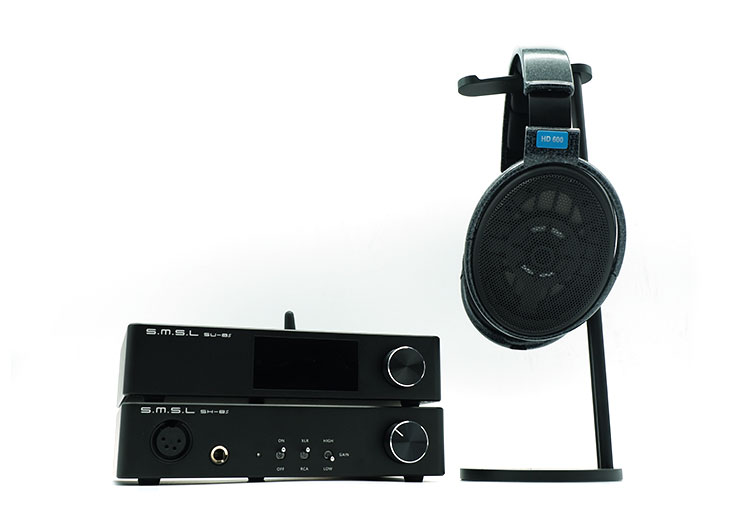The SMSL SU-8s is an MQA and Bluetooth-capable desktop ES9068AS DAC featuring up to DSD512 and PCM 32BIT 768kHz decoding. It is priced at $359.99
Disclaimer: The SMSL SU-8s sent to us for this review is a sample in exchange for our honest opinion. We thank Shenzhen Audio and SMSL for giving us this opportunity.
To read more about SMSL products we have reviewed on Headfonics click here.
Note, this 2-page review follows our new scoring guidelines for 2021 which you can read up on here.
When I was reviewing SMSL’s SH-8s, I was commenting on the pace at which SMSL has been developing its products. The team at SMSL surely doesn’t rest on their laurels, and they continually keep at it with developing new products whether it’s a speaker amp, a headphone amp, or even a DAC.
Today, we’re taking a closer look at the companion to the SH-8s, which is the SU-8s. It’s interesting to see how SMSL has gone a number down from their latest DAC in their SU series and gone with the name SU-8s with their newer DAC.
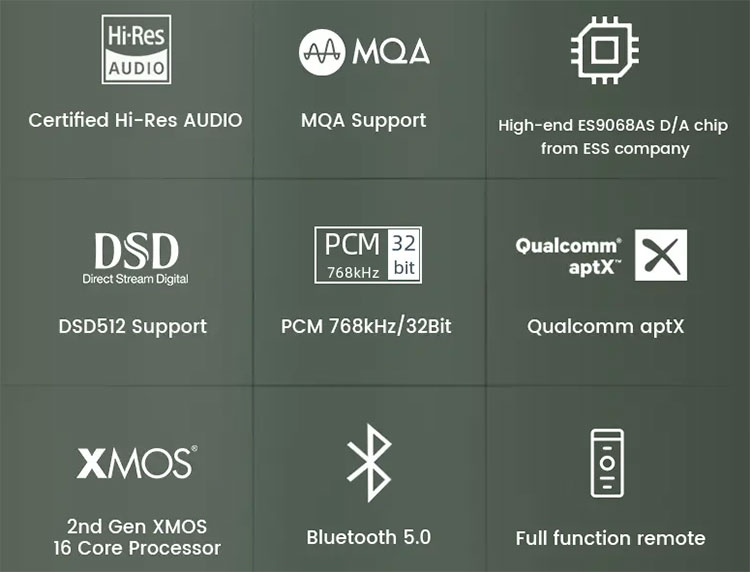
Tech Highlights
While the SU-8s look is eerily similar to other SMSL DAC offerings, the internals isn’t just minor modifications of the other SMSL DACs. The SU-8s is equipped with a linear power supply to keep any switching frequencies away from the audio circuit.
USB processing on the SU-8s is done by an XMOS XU216 USB controller, and this means that the SU-8s has MQA rendering capabilities. Downstream to the XU216, the SU-8s is equipped with an ESS ES9068AS DAC chip, which is a 2 channel DAC chip that features Hyperstream II technology.
With the DAC and the USB controller working in conjunction, the SU-8s can decode up to 32bit/768kHz PCM, DSD512, as well as MQA. Aside from a well-designed input and DAC section, the SU-8s’ output section is designed with 5 OPA1612 opamps.
Packaging & Accessories
The SU-8s arrives in SMSL’s typical white box, however, it doesn’t have an outer sleeve anymore, instead, all branding material is found in front of the box. Opening the box reveals that the DAC and the other accessories are kept safe with foam material.
Aside from the SU-8s itself, the package also contains a standard IEC power cord, a remote control, a USB cable, a Bluetooth antenna, and 4 extra feet that can be placed at the bottom of the device. This is simply the standard packaging that SMSL DACs come in, however, adding the rubber feet is a nice touch.
Design
When I first saw the SU-8s online, my thoughts were that it’s a trimmed-down version of the SU-9. And physically, the dimensions of the SU-8s is actually the same as the SU-9, except that the depth of the SU-8s is trimmed down by around 12mm. Aside from that, the 2 devices are easily mistakable for each other.
In the center of the front fascia, there is a 1.9” TFT screen protected by tempered glass, to protect the LCD, as well as to ensure clear viewing angles of whatever information is on the LCD. To the right of the screen sits the volume knob that allows for volume control, and is utilized for menu navigation.
The chassis of the SU-8s is primarily made of aluminum, and it can easily act as a heat sink. But since the SU-8s doesn’t heat up that much, it won’t necessarily have to act as a heatsink.
At the bottom of the device, the SU-8s still has 3 rubber feet, where the rear of the device only has 1 rubber foot. Fortunately, additional rubber feet have been provided for the off chance that the SU-8s may need more stability.
Inputs & Outputs
The available input options with the SU-8s are what we have come to expect from a DAC these days. Located in the rear of the device is a USB port, coaxial, and optical port.
With SMSL though, they have also added the option for Bluetooth, so a Bluetooth aerial port is available in the rear. Also located in the rear of the SU-8s are a pair of single-ended and balanced outputs.
Bluetooth 5.0
While Bluetooth is not meant to be the main means of connecting to the SU-8s, SMSL still made sure that it is equipped with the latest Bluetooth codecs.
So the SU-8s is capable of accepting SBC and AAC as standard codecs for Android and Apple respectively. However, it is also equipped to accept aptX and aptX HD. This means that the SU-8s’ Bluetooth connection tops out at 24bit/48kHz.
Surprisingly, there isn’t much of a difference between the wired connection and the Bluetooth connection in terms of detail retrieval. However, when it comes to the dynamic range, and the layering within the soundstage, a USB connection tends to be more defined.
Connecting to the SU-8s via Bluetooth is straightforward, where the initial connection is done by first pairing your phone with the device. Subsequent connections are done automatically, as long as the SU-8 is set to Bluetooth input.
Walking around, I was able to get a stable Bluetooth connection to the SU-8s even when I walked outside my room, which means there is 9” of wall and 5 meters of open space between me and the device.
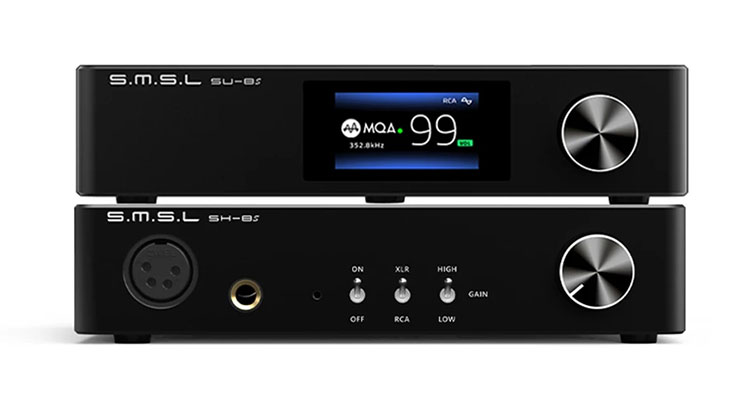
Controls
There are 2 ways to interact with the SU-8s, and you could either choose to control it using the remote control or directly going through the volume knob in front of the device.
Using the volume knob, it can be pressed to make a selection, and it can be turned to go through the different options available. Pressing and holding the volume knob will return to the previous menu.
The other option for going through the menu is using the remote control. To activate the remote control, ensure that the C button is pressed before trying to go through the different options in the device.
After that, pressing the up and down buttons will change the volume, the center button is the selection button and will bring you into the menu. There is a power button and a mute button on the remote, which comes in handy if you need to turn off or mute the device instantaneously.
FN key
In previous SMSL DAC reviews, I mostly ignored the FN key on the remote control, since pressing it will just change the DACs input to Bluetooth. However, the SU-8s it can serve other purposes as well. In the menu, there are options to change the function of the FN button from Bluetooth to All Outputs mode, to Switch RCA/XLR.
When the FN button is in output mode, pressing the FN key will change the output mode cycle to the outputs of the DAC. Where the first mode is ALL normal, where both outputs are running at the same time.
XLR normal on the other hand will turn off the RCA output, while RCA normal will turn off the XLR outputs. Then there is the inverted version of all these 3 modes, which will just invert the output of either the RCA, XLR or both.
The 3rd mode is the Switch RCA/XLR mode, where pressing the FN key will toggle between RCA output and XLR output. This mode will no longer allow for both outputs to run at the same time.
These additional functions will allow for more flexible control of the output, particularly when the SU-8s is used as the main control center for a setup with 2 outputs.
Sound Impressions
The general impression that I get when I listen to the SU-8s is that it leans towards the warmer side of things. With the treble response having a generally nimbler presentation, treble passages lean on the thinner side at times.
However, when it comes to cymbal hits, there is a distinct crystalline character to each hit, while harmonic overtones of instruments come through clearly without being too bright.
The midrange on the other hand is slightly elevated, which allows it to be more forward. While there are harmonic overtones, vocal euphony tends to be controlled rather than all-out liquid.
Bass is distinctly weighty, with each drum hit or bass note being a bit heavy-handed. While it’s heavy-handed, bass hits are not particularly agile. This means that the attack with each drum hit ends up being a tinge held back at times. Furthermore, drum hits are not particularly rounded or textured, instead, there are times when they sound a bit like a splat.
Due to the less airy presentation, I would have assumed that it won’t have an expansive soundstage. Contrary to that assumption, the SU-8s actually has a respectably expansive soundstage presentation, where each sound element is placed precisely in its right place.
The only thing that I could nitpick with the SU-8s’ soundstage presentation is its tendency to overlap the layers within the soundstage.
Orchestral tracks with a wide dynamic range end up being presented a bit louder than expected. However, the SU-8s is fleet of foot enough to present an emotional crescendo with enough weight and gusto to convey the emotion in the passage.
Filters & Sound Color
While most DAC filters don’t make much of a difference, the filters on the SU-8s have a more significant effect. With the Fast Linear filter producing a noticeably more immediate sense of attack and decay.
The Slow Minimum on the other hand is a more middle-of-the-road presentation, while the Minimum Phase filter tends to cool things down a notch.
Sound color on the other hand has 3 main options being Rich, Tube, and Crystal, where each of those 3 choices has 3 levels. The effect is as expected with the names of the sound coloration, where the Rich sound is a bit warmer, the Tube sound gives a richer midrange, while the crystal gives more treble sharpness.
These filters are there to fine-tune the output of the SU-8s, and I believe that it will make the SU-8s more versatile in terms of equipment pairing downstream. While both of these options make an audible change to the SU-8s’ output, the effect of the PCM filters has a more pronounced effect comparatively.

